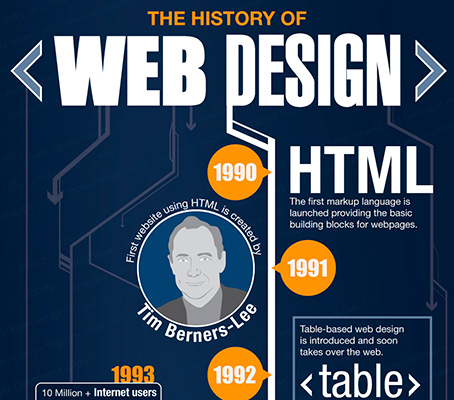Interested In Finding Out Exactly How Internet Site Design Has Advanced Throughout The Years? Discover The Trip From Basic, Straightforward Styles To User-Centric Interfaces That Prioritize The Visitor'S Experience
Interested In Finding Out Exactly How Internet Site Design Has Advanced Throughout The Years? Discover The Trip From Basic, Straightforward Styles To User-Centric Interfaces That Prioritize The Visitor'S Experience
Blog Article
Written By-Solis Wong
In the past, internet sites were basic and concentrated on information. https://seoconsultingservices94838.blogsuperapp.com/30377992/differentiating-the-contrasts-in-between-local-search-engine-optimization-and-standard-search-engine-optimization was straight, and layout was for desktops. Now, user experience is vital. Information guides layouts for very easy navigating. Receptive layouts match different devices. off page seo websites , dark setting minimizes pressure, and minimalist food selections improve navigation. Interactive functions engage customers, and vibrant visuals stand out. AI integration boosts involvement. See exactly how layout has evolved to enhance your on-line journey.
Early Days of Web Design
In the very early days of website design, simpleness reigned supreme. Sites were standard, with minimal colors, fonts, and layouts. The emphasis got on offering details instead of fancy visuals. Customers accessed the internet with slow-moving dial-up connections, so speed and capability were crucial.
Navigating menus were straightforward, typically located at the top or side of the page. Internet sites were created for desktop computers, as mobile browsing wasn't yet common. Web content was king, and designers focused on easy readability over complex style components.
HTML was the key coding language utilized, and designers needed to work within its restrictions. Computer animations and interactive features were marginal compared to today's criteria. Internet sites were static, with little vibrant web content or customized customer experiences.
Surge of User-Focused Design
With the development of site layout, a shift in the direction of user-focused layout concepts has become increasingly popular. Today, creating sites that focus on user experience is essential for involving site visitors and achieving service goals. User-focused style involves comprehending the demands, choices, and behaviors of your target audience to customize the web site's design, web content, and features accordingly.
Designers currently conduct detailed study, such as individual studies and functionality screening, to collect insights and responses straight from users. This data-driven approach aids in developing user-friendly navigation, clear calls-to-action, and visually attractive interfaces that reverberate with site visitors. By navigate to this website at the center of the style procedure, sites can deliver a more personalized and satisfying experience.
Responsive layout has additionally become a crucial element of user-focused style, ensuring that websites are optimized for numerous devices and screen sizes. This flexibility improves access and functionality, satisfying the varied ways individuals communicate with websites today. Essentially, the rise of user-focused style symbolizes a change in the direction of producing electronic experiences that focus on the needs and assumptions of the end user.
Modern Trends in Web Design
Explore the most up to date patterns shaping website design today. One popular pattern is dark mode layout, using a sleek and contemporary look while minimizing eye pressure in low-light settings. Another key fad is minimal navigation, simplifying menus and enhancing user experience by concentrating on essential elements. Incorporating micro-interactions, such as animated buttons or scrolling effects, can produce an extra appealing and interactive internet site. Responsive layout continues to be important, making sure seamless customer experiences across various devices. Furthermore, utilizing bold typography and asymmetrical designs can add aesthetic rate of interest and draw attention to particular material.
Integrating AI innovation, like chatbots for consumer assistance or customized suggestions, boosts customer interaction and improves processes. Access has likewise become a significant trend, with developers prioritizing comprehensive design techniques to accommodate varied customer requirements. Welcoming sustainability by optimizing internet site efficiency for speed and effectiveness is an additional emerging pattern in web design. Working together with individual comments and data analytics to iterate and enhance layout constantly is important for remaining appropriate in the ever-evolving electronic landscape. By welcoming these modern trends, you can develop an aesthetically appealing, straightforward site that resonates with your audience.
Conclusion
As you assess the development of web site layout from the very early days to currently, you can see exactly how user-focused style has ended up being the driving pressure behind contemporary trends.
Embrace the journey of modification and adaptation in web design, constantly keeping the individual experience at the forefront.
Stay present with the latest trends and modern technologies, and never stop advancing your strategy to produce visually magnificent and straightforward websites.
Progress, adjust, and develop - the future of web design is in your hands.
